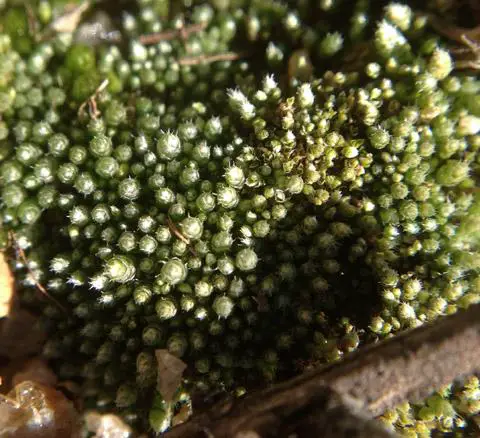
ea9889cf2115ac25b70054b3f7768133.jpg from: https://www.pinterest.com/pin/394416879843192435/
Exploring the Tiny World of Bryum minutulum Schimp. Moss

2.jpg from: https://nathistoc.bio.uci.edu/Mosses/Bryum argenteum/index.html
Introduction
Have you ever stopped to admire the tiny, delicate mosses growing on rocks, trees, or even sidewalks? One fascinating species is Bryum minutulum Schimp., a small but mighty moss in the Bryaceae family. In this blog post, we’ll dive into the captivating world of this miniature marvel.
Background on Bryum Mosses
Bryum is a genus of mosses containing hundreds of species found worldwide. They belong to the division Bryophyta and class Bryopsida. Bryum mosses are known for their small size and ability to colonize various substrates.
Morphology and Identification
Bryum minutulum Schimp. is one of the smallest species in the genus, with stems typically less than 5 mm tall. Its leaves are ovate to lanceolate, with a strong midrib. The leaf margins are often recurved. Capsules are ovoid to cylindrical on a long seta. With a hand lens or microscope, you can spot the characteristic double peristome teeth.
Global Distribution and Habitat
This cosmopolitan species is found on all continents except Antarctica. B. minutulum grows on a variety of substrates, including soil, rocks, concrete, and tree bark. It thrives in disturbed habitats like roadsides, urban areas, and agricultural fields.
Ecological Roles and Adaptations
Despite its small size, B. minutulum plays important ecological roles:
- Soil stabilization: The dense mats formed by the moss help prevent soil erosion.
- Water retention: Like a miniature sponge, the moss absorbs and retains water, regulating moisture in its microhabitat.
- Pioneer species: B. minutulum is often one of the first species to colonize bare substrates, paving the way for other plants.
The moss has several adaptations that allow it to thrive:
- Desiccation tolerance: It can survive periods of drought by going dormant and quickly rehydrating when moisture returns.
- Asexual reproduction: In addition to spores, the moss can reproduce via fragmentation, allowing rapid colonization of new areas.
Conclusion
The next time you see a patch of tiny green moss, take a closer look – it might be Bryum minutulum Schimp. This diminutive plant is a true survivor, playing crucial roles in ecosystems worldwide. As you’ve learned, even the smallest organisms can have a big impact. What other miniature marvels are waiting to be discovered in your own backyard?